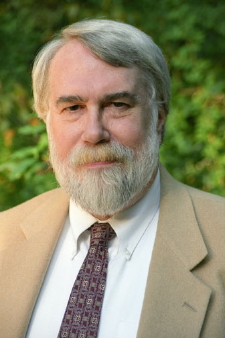by David Kulma
Although the symphony has always been the bedrock of orchestral music, new additions to the genre are rare on orchestra programs. On Saturday, October 19, I made the 4-hour drive to Southwest Ohio to hear the world premiere of Christopher Rouse’s Symphony No. 6, commissioned as a part of the Cincinnati Symphony’s 125th anniversary season. That Rouse died only a month earlier at the age of 70 gave extra weight to the proceedings.
Based on this concert with music director Louis Langrée, orchestral music is well-served in Cincinnati. Opening a concert with Maurice Ravel’s Boléro is a bold gesture, considering that the excitement it generates over its 15-plus minutes could easily leave the rest of the concert on a downslope. The solos were excellently handled all around, while Langrée patiently kept the long line in mind, allowing the music to peak at just the right moment. It was a hard act to follow, but the rest of the concert matched its opening energy
In keeping with the theme of Spanish-flavored music composed by Frenchmen, violinist Guy Braunstein joined the CSO for Édouard Lalo’s Symphonie espagnole. Written for Pablo Sarasate, this five-movement suite of engaging melodies and pot-boiling virtuosity was the perfect vehicle for Braunstein’s effortless mastery. His comfort with amazing technical feats was even more on display in his delightful encore: six Paganini-esque variations on Lennon and McCartney’s Blackbird.
Christopher Rouse was a wonderful composer. His sense of impending catastrophe and historical context — a Brahms for our age of climate disaster — has made his music gargantuan in its apexes and imposing in its elegies. Luckily for him and us, he had access to great orchestras and soloists for whom he wrote six symphonies, numerous concerti, and other grand orchestral works. As in the case of Shostakovich, listening to his creations can be a dour business with their shrieking brass, crass scherzi, and towering shock chords. But if one grants Rouse his due, his contrasting, yet uneasy, calms come as a reality-focusing salve.
In a way, the Sixth Symphony is his summa. Arranged in four connected movements totalling about 25 minutes, the outer Adagios set the mood. The focus of the first elegy is a repeating flugelhorn phrase, here played with heart-rending grace by principal trumpet Robert Sullivan. The second and third movements are dissonant scherzi that roil into more and more climaxes verging on the apocalyptic. And the final elegy with its refracting upper strings and its low grumblings mourns on the grandest scale.
As the symphony winds down, the aching flugelhorn melody returns, the strings wander through flickering triads, and the music comes to rest on a long drone, as if the world is returning to its primordial soup. In this performance, the final gong stroke was followed by a long reverent silence engineered by the profound music — a fitting conclusion to Christopher Rouse’s remarkable body of work.
Published on ClevelandClassical.com November 13, 2019.
Click here for a printable copy of this article




